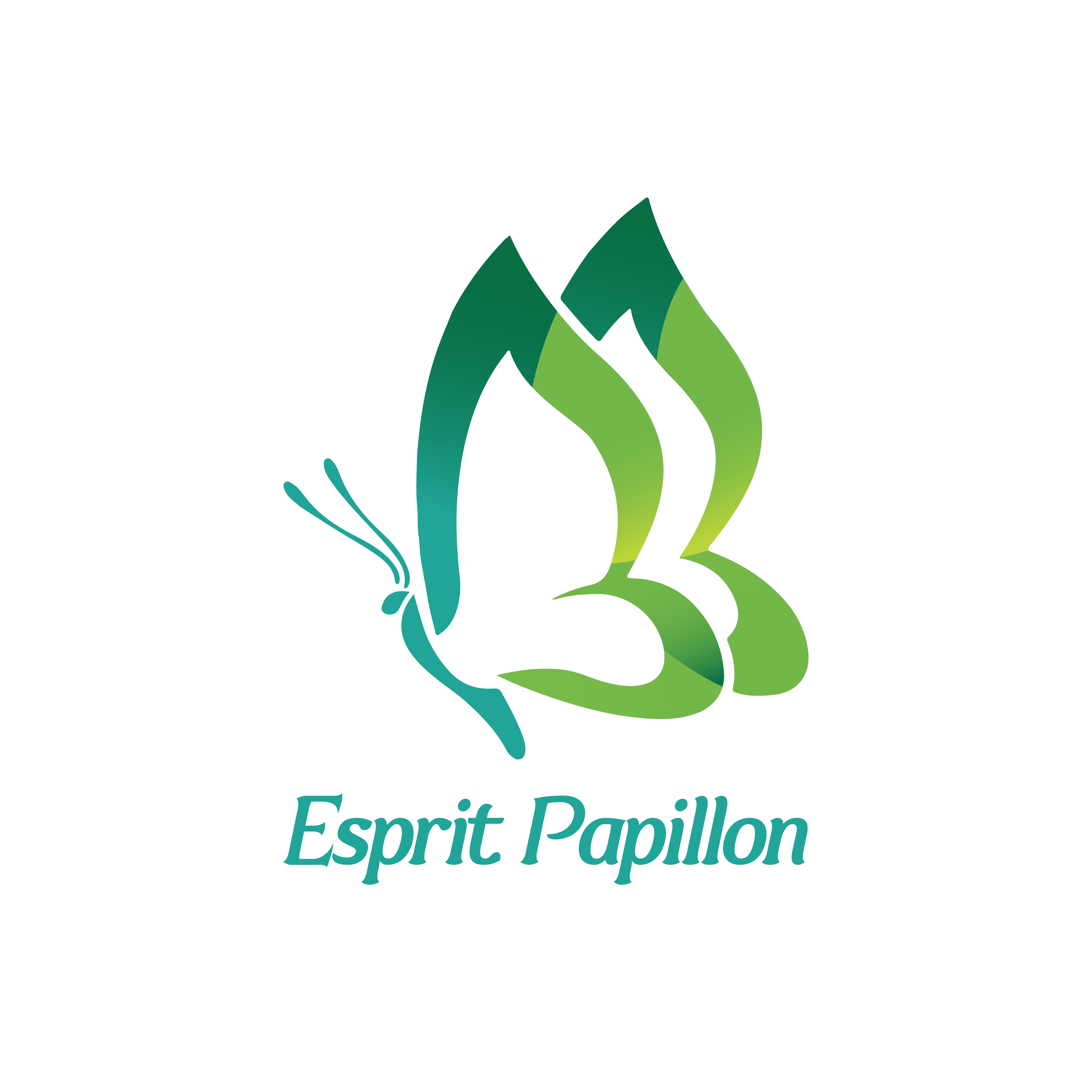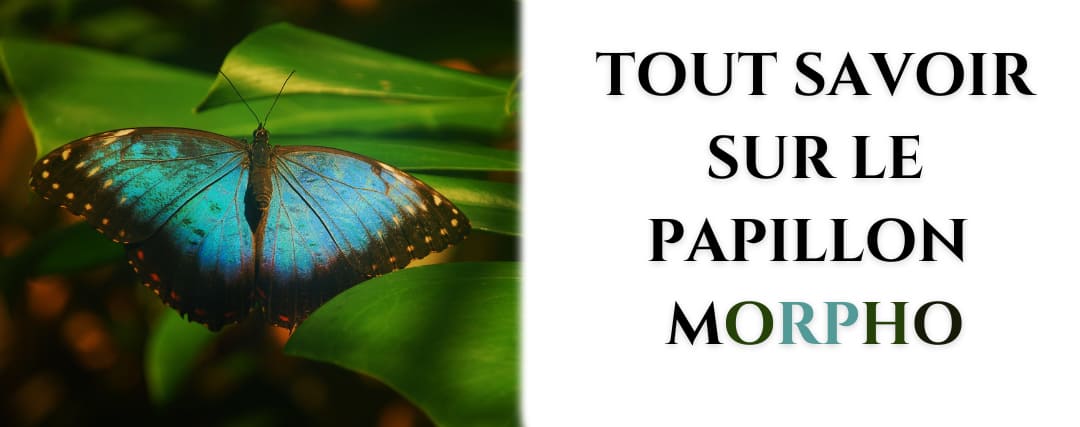Instantly recognizable by its vibrant iridescent blue wings, the Morpho butterfly not only catches the eye, it sparks intrigue and fascination. This unique butterfly species captivates viewers, invites researchers to discover its secrets and plays a central role in the biodiversity of our planet.
The Morpho butterfly is, in fact, an emblem of the rich and lush habitats of South and Central America. Often sought after by collectors for their striking beauty and by scientists for their unusual characteristics, these creatures tell a fascinating story about the ingenuity of nature.
In this article we will delve into the fascinating world of the Morpho butterfly. Through the shimmering hues that define their appearance, the habitats in which they thrive, their life cycle and their cultural significance to human societies, let us begin now an exploratory journey into the lives of these magnificent insects.
Characteristic of the Morpho butterfly
The Morpho butterfly has a captivating and remarkable charm, but to truly appreciate its splendor we must get to know more about this unique moth.
Scientific classification and geographical distribution
Scientifically, the Morpho butterfly belongs to the order Lepidoptera and the family Morphoidae. Named after the Greek god Morpho, symbolizing beauty and transformation, this butterfly, with over 29 accepted species, lives up to its name. The most famous species, the Blue Morpho (Morpho peleides), is universally recognized for its iridescent blue wings.

Mostly found in the tropical rainforests of Latin America, from Mexico to Colombia and as far away as Peru and Bolivia, these butterflies adorn their habitats with a brilliant flash of blue as they fly among the trees.
Morphology: a careful examination of physical characteristics
The Morpho butterfly is a large butterfly, whose wingspan can extend between 7.5 and 20 centimeters. Its sturdy, rounded wings are adorned with tiny scales that reflect light, leading to their characteristic shimmer. The underside of the Morpho's wings contrast sharply with the bright blue above, showcasing a variety of earthy tones and often intricate eye spots, helping the butterfly blend into its surroundings when its wings are closed.
Where do morpho butterflies live?
Morpho butterflies are native to the tropical rainforests of South and Central America. They prefer the dense canopy of the rainforest for protection, only occasionally descending to the forest floor to feed or lay eggs. These habitats, ranging from Mexico to Colombia, and from Ecuador to Venezuela, provide the ideal environment for Morpho butterflies to thrive.
Despite their relatively isolated habitats, some Morpho species have been found at altitudes as high as 1400 meters, demonstrating their remarkable adaptability. They are also known to dwell around streams and rivers, contributing to the overall biodiversity and vibrancy of their habitats.
Morpho Butterfly Life Cycle
Just as captivating as the butterfly itself, the morpho's life cycle unfolds in four distinct stages, from a tiny egg to an enchanting, iridescent adult.
The egg stage: the beginning of the journey
A Morpho butterfly's journey begins when the female lays her eggs, usually on the underside of the host plant's leaves. The eggs are tiny, spherical and pale green, ideally camouflaged against lush vegetation.
The larva/caterpillar stage: growth and transformation
After a few days, the eggs hatch into larvae or caterpillars. The Morpho caterpillar is an eating machine with an insatiable appetite for leaves, which fuels its rapid growth. Covered in protective hair-like hairs and displaying bright colors, the caterpillar wards off predators and develops through a series of molts, also called instars, where it sheds its old skin to allow for further growth.

The nymph/chrysalis stage: a phase of metamorphosis
Once the caterpillar reaches its full size, it transitions to the pupa or chrysalis stage. Here it attaches to a leaf or stem and forms a protective shell. Inside the chrysalis, one of nature's most impressive transformations takes place. The caterpillar's old body breaks down into cellular structures, and these cells rearrange to form an entirely new creature: the adult butterfly or imago.
The adult stage: the birth of the blue wonder
After several weeks, the chrysalis cracks and a new creature emerges. Wet and wrinkled at first, the Morpho butterfly spreads and dries its spectacular wings, preparing for its first flight. The adult butterfly now begins its search for food and mates, dazzling the forest with flashes of radiant blue. The cycle will then repeat when the female lays her eggs, ensuring the continuity of this enchanting species.
The Morpho Butterfly's Striking Appearance
The Morpho butterfly is the quintessential representation of the art and elegance of nature. It's impossible not to be captivated by its iridescent wings which seem to change color with each flap.
Why are Morpho butterflies blue?
The distinct, dazzling blue of the Morpho butterfly is not the result of pigmentation but rather a fascinating natural phenomenon known as structural coloration. Their wings are covered in microscopic scales that reflect and refract light in a specific way, creating their characteristic blue hue.

The scales on the Morpho butterfly's wings have tiny ridges and pits that interfere with light waves. This process causes the cancellation of certain wavelengths of light while amplifying others, particularly those in the blue range, hence their iridescent blue appearance. It is a striking example of nature's mastery over light and colors.
Color variations of morpho butterflies
Although the bright blue Morpho is the most well-known, there is a spectrum of colors among the different species of Morpho butterflies. Some sport shades of green, while others have brown wings edged with a brilliant blue.
The underside of a Morpho butterfly's wings present a striking contrast to its vibrant upperside. It is usually brown or gray with a series of eye spots providing excellent camouflage from predators when their wings are closed. This wonderful demonstration of nature's balance between beauty and survival further adds to the appeal of the Morpho butterfly.
The role of the Morpho butterfly in its ecosystem
The beauty of the Morpho butterfly is matched only by the vital role it plays within its ecosystem. Let's examine its diet, its crucial role in maintaining the balance of its habitat and its predators.
What do morpho butterflies eat?
Although their diet varies between species and life cycle stages, most morpho butterflies, in the caterpillar stage, feed on a variety of plant leaves, particularly those in the legume family. As adults, they transition to a diet of liquids, which they consume through a long, tube-like mouthpart called a proboscis. They feed on the nutritious juices of overripe fruits, the oozing sap of trees, and even the bodily fluids of small dead animals. They use their long, coiled proboscis, a sort of straw-like tongue, to sip these fluids.

They can also count on their extraordinary vision to find food! Indeed, they have a fascinating array of photoreceptors that allow them to see a wide spectrum of colors. They can even perceive ultraviolet light, which is invisible to the human eye.
Morpho butterflies also engage in a behavior called "puddling", where they gather on muddy ground or wet sand to drink the mineral-rich water, an essential part of their diet, especially for males, aiding them in reproductive success.
Interestingly, unlike many butterflies, Morphos are not usually pollinators, as they do not generally feed on nectar.
The role of morpho butterflies in pollination
Although Morphos are not traditional pollinators like bees or hummingbirds, they indirectly contribute to the pollination process. As caterpillars, they feed on specific types of leaves, influencing the plant diversity in their habitats. In this way, they indirectly contribute to the health and balance of their ecosystem, including the pollination process.
Natural predators of the morpho butterfly
Just as the Morpho butterfly is part of the food chain, it is also threatened by various predators. Birds, particularly the jacamar and the flycatcher, are their most common adversaries. Other threats include large insects, spiders and even small mammals.
To escape these threats, the Morpho Butterfly uses ingenious tactics. Morpho butterflies are known for their characteristic, bouncy flight. Their flight, which appears random and directionless, is actually a clever survival tactic to escape predators.
Their shiny blue wings seem to disappear entirely, replaced by their less visible other side. This rapid change in color and pattern confuses predators, giving the Morpho butterfly a chance to escape.
You should also know that the morpho butterfly is a master of camouflage. Although known for its iridescent blue wings, it is equally adept at blending into its surroundings. The undersides of their wings are a dull brown with eye spots that mimic the eyes of larger creatures, discouraging potential predators. When at rest with their wings closed, they can easily be mistaken for a dead leaf, providing excellent camouflage in their forest habitats.
The morpho butterfly and humans
The beauty and grace of morpho butterflies have deeply touched human cultures, and their unique characteristics are studied in scientific research and technology.
Use in scientific research and biomimicry
Perhaps one of the most exciting roles for Morpho butterflies lies in the field of science and technology. The unique structure of the butterfly's scales, which gives them their iridescent color, has inspired advances in optical technology. This field, known as biomimicry, mimics natural structures to solve human problems. Morpho's scales have inspired more efficient solar panels, anti-counterfeiting currency and passport technology, and even advances in fabric and clothing design.

Morpho Butterflies in Culture and Symbolism
The Morpho butterfly occupies a special place in various cultures. Its transformative life cycle often symbolizes rebirth, transformation and change. The vibrant blue of their wings is associated with the tranquility of the sky and water, often symbolizing peace and freedom.
In some indigenous cultures of South and Central America, the Morpho butterfly is believed to carry spiritual messages or represent deceased souls , creating a mystical aura around these gentle creatures.
Their stunning wings are also used in art, jewelry and as decorations, making them important in cultural expression and local economies.
Conservation status of the morpho butterfly
Unfortunately, these captivating creatures face several threats. Habitat destruction due to deforestation and climate change is their greatest concern, drastically reducing their numbers in the wild. Additionally, illegal poaching for their beautiful wings poses a significant threat.
Although not currently listed as endangered, some Morpho species are endangered and conservation efforts are essential to prevent their decline. Several local and international organizations are engaged in conserving their habitats, promoting sustainable practices and educating the public about the importance of these butterflies.
As individuals, we can also play a role. Supporting conservation efforts and raising awareness of these beautiful creatures can help their survival.
Conclusion
The Morpho butterfly, with its radiant, iridescent wings and complex life cycle, is a living testimony to the splendor of nature. Its role in our planet's ecosystems, cultural landscapes and even in inspiring technological innovations, is a lasting reminder of how our lives are intimately linked to those of the smallest creatures.
Our journey through the life and lore of the Morpho butterfly highlights not only its fascinating world, but also the challenges it faces in a rapidly changing environment. It’s a call to action for all of us to participate in conservation efforts, no matter how big or small.
May this article serve as a springboard for your curiosity and foster a deeper appreciation of these winged creatures. Remember that every creature, no matter how small, plays a vital role in the rich tapestry of life on Earth.





